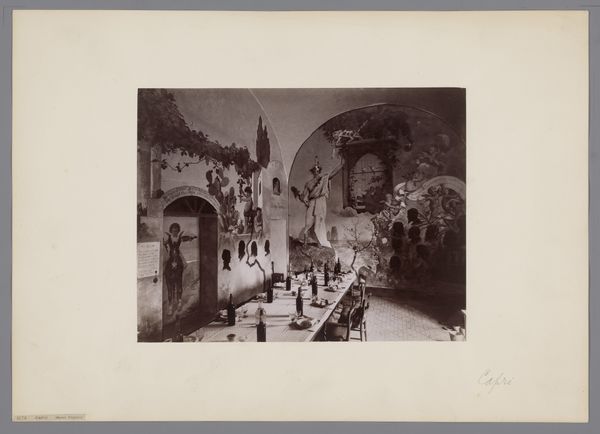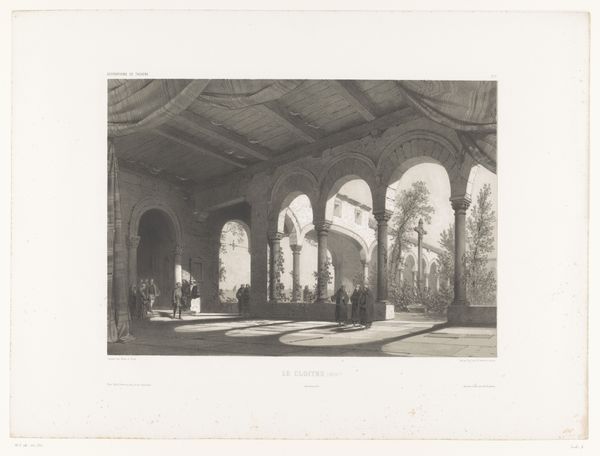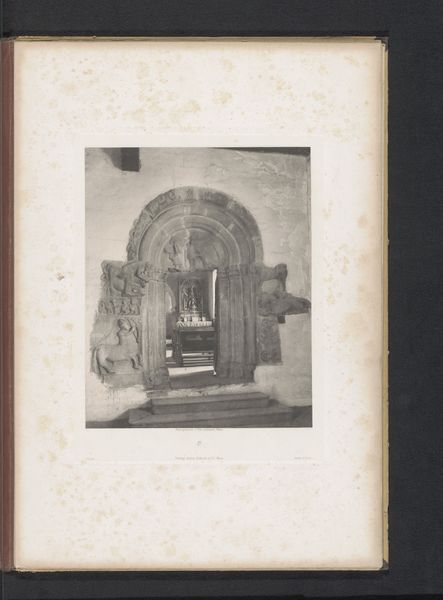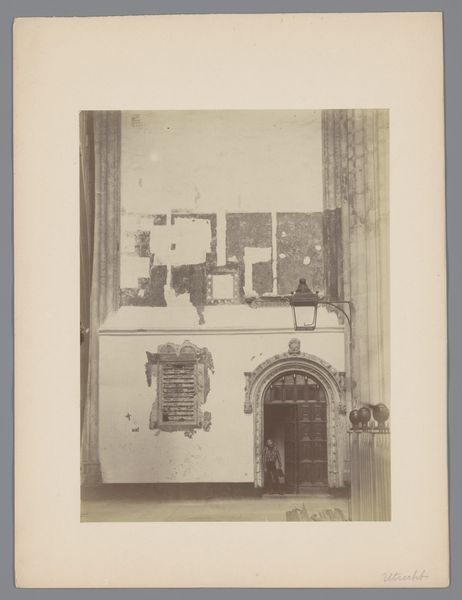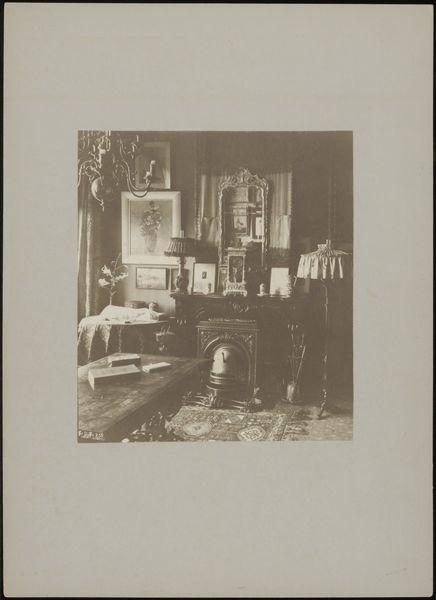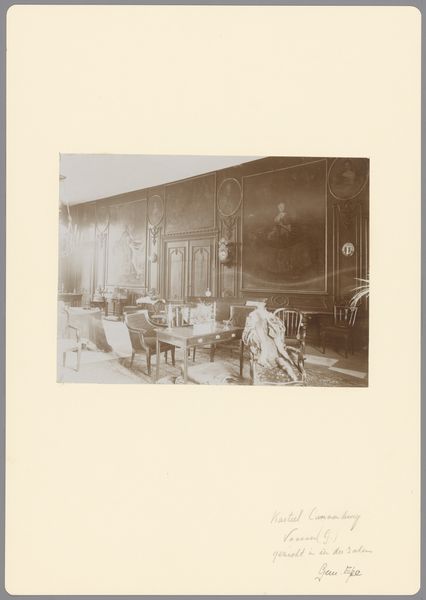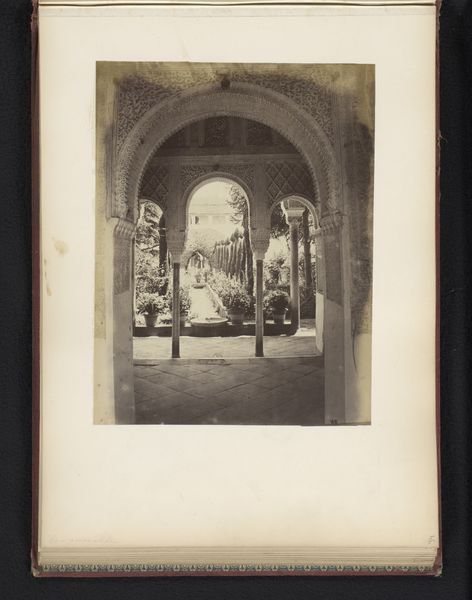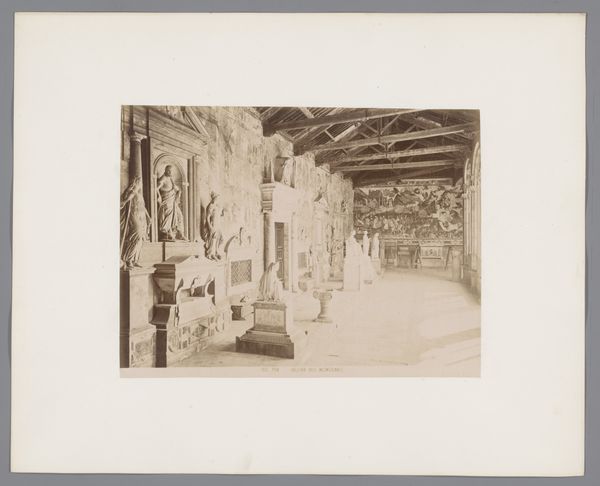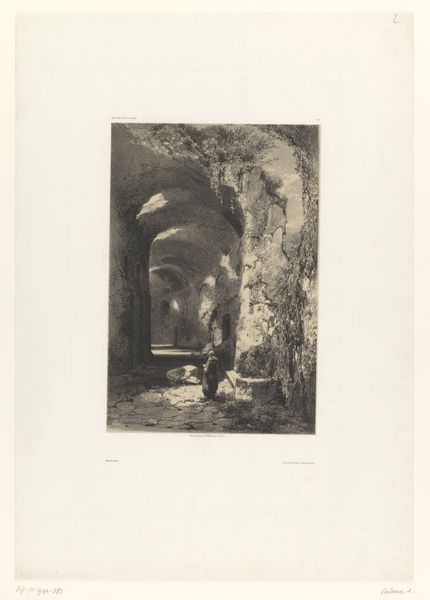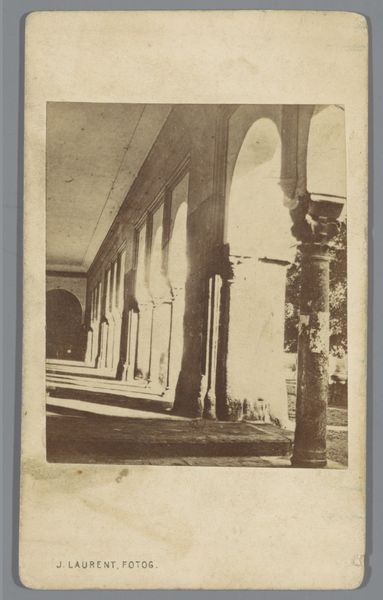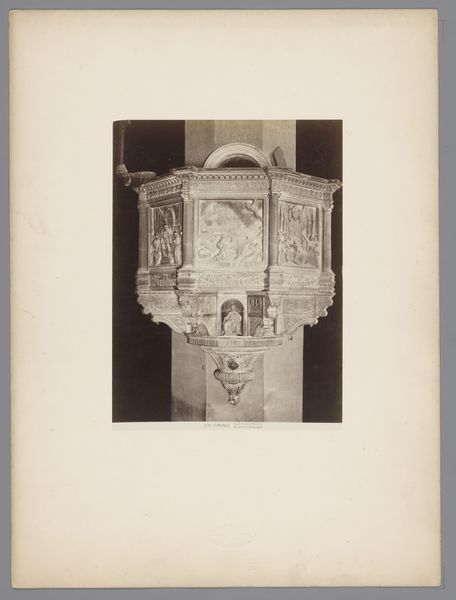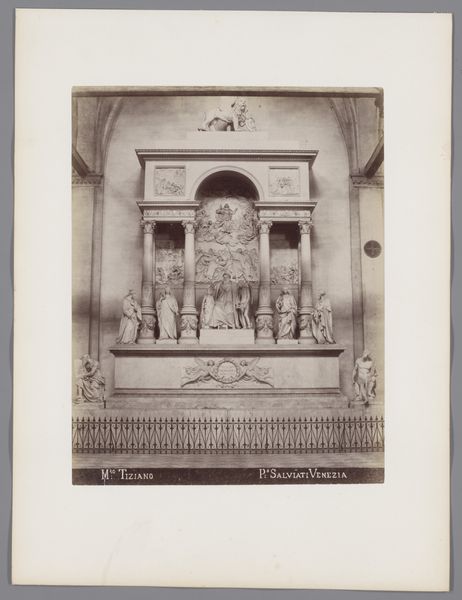
Interieur van de eetzaal van Hotel Pagano te Capri, Italië 1857 - 1915
0:00
0:00
Dimensions: height 250 mm, width 445 mm
Copyright: Rijks Museum: Open Domain
Editor: So, this photograph, "Interieur van de eetzaal van Hotel Pagano te Capri, Italië," was taken sometime between 1857 and 1915 by Giorgio Sommer. The mood feels…staged, yet inviting, in a curious way. All those bottles! How do you interpret this work? Curator: It's a fascinating image precisely because of that tension. We see not just a dining room, but a constructed reality heavy with symbolic potential. Notice how the seascape mural behind the table dominates the scene, a ship battling stormy seas. Do you see a possible relationship between the image of the storm, the still life with the bottles and tableware? Editor: I hadn't thought of it that way. The mural… the chaos of the sea... and then the ordered, almost ritualistic placement of bottles on the table? Maybe a contrast between nature and civilization, or adventure and stability? Curator: Exactly! And look at the figures in the painting to the left, locked in some sort of battle. Consider also that Capri was a destination for artists and writers, figures searching for inspiration, for escape, even. Sommer has given us, perhaps, a stage for their dreams and struggles. The dining room transforms into a theater, and the bottles into characters on stage, laden with cultural memory. They represent not only potential indulgence, or perhaps celebration, but are placed directly between this battle scene and the chaotic mural. Editor: That's such an interesting way to look at it. So, these aren't just bottles. They’re stand-ins for aspects of the human condition: conflict, tranquility… the yearning for something more, something "out there". The bottles could even be understood to reference "spirits"! It gives the image so much more depth. Curator: Precisely. A potent reminder that even seemingly simple images are imbued with a history, and complex social relations and meanings. Editor: This has been a real eye-opener; it makes you appreciate the layers of meaning that even seemingly mundane photographs can hold.
Comments
No comments
Be the first to comment and join the conversation on the ultimate creative platform.
